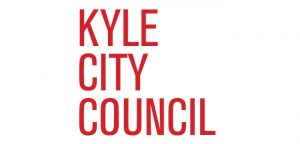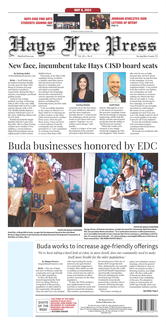By Moses Leos III
For the better part of 25 years, Tim Miller’s organic farm on Opal Lane, Millberg Farms, has avoided the expanding growth of Hays County. Growth could soon knock on Miller’s doorstep.
With Hays County selecting a preferred alternative for an FM 150 realignment, Miller believes the new road could greatly affect his business.
“The significance is the vehicle emissions. They know it and I know it,” Miller said. “This is not a little highway; this is a major highway. This is going to be just like I-35.”
Hays County’s selection of a preferred alternative culminates a study co-sponsored by Hays County and TxDOT. The study was conducted after the county held several public input meetings on the four options in September.
The purpose was to assess four corridors of realignment. During his presentation on April 14, Joe Cantalupo, project manager at K. Friese + Associates, said the overall goal is to identify a corridor that alleviates congestion through downtown Kyle.
In addition, the realignment seeks to safely improve traffic flow in the county, along with support desired growth and development.
Ultimately, the county tabbed Corridor C as the alternative. The corridor would connect FM 150 near Arroyo Ranch Road to Yarrington Road in San Marcos.
According to Cantalupo, it offered the best balance of the four options.
“They all have their pros and cons,” Cantalupo said. “This is the one that satisfies the most criteria, or seems to have the least amount of things that impact negatively.”
Several considerations went into the selection of Corridor C.
Feasibility of construction was one reason. According to the study, the corridor wouldn’t feature improvements to any Union Pacific railroad crossings. Corridor C would impact the least amount of floodplains among the four options.
Corridor C addressed the county’s mobility needs; the project marks the southern alignment of the Kyle Loop system according to the Hays County Transporation Plan.
It would also avoid businesses and public facility resources, along with balancing human and natural environment impacts.
The corridor also supports “desired growth in Kyle.” According to Cantalupo, the realignment “wouldn’t counter what their plans are, what they think about development.”
It’s also thought to alleviate traffic from downtown. But Cantalupo said the study collected traffic counts from existing data, but they did not conduct an area-wide network model.
But how much the option could cost, or how many property owners could be affected has yet to be determined.
The process will begin as Hays County looks for the road’s alignment. According to Cantalupo, the search would be done in “close coordination” with property owners. Discussions could gauge how property owners feel about growth and development to Hays County.
Cantalupo, however, “would not take guesses” on how the county plans to acquire land. He said the realignment would need up to 100 to 150 feet of right-of-way.
“We’ll educate property owners and sit down with them,” Cantalupo said. “We want to have the least impact as possible with folks.”
But for Miller, several concerns lie with the possible realignment. Noise concerns were one possible issue.
Finding another piece of property could prove problematic. While he said “fair market value” could be given for his property, it would be a challenge to acquire another suitable piece of land for farming.
“I can’t buy any land anywhere around here in Central Texas,” Miller said. “I did my work 25 years ago … I wanted to be away from vehicle emissions.”
The potential to lose the farm’s status as organic gives pause for Miller. Organic farmers must improve or maintain their quality of air, water and soil.
He has vouched for baseline emissions testing, both before, during and after the road is built.
“Every grower that is certified organic has to do that. They have to maintain or improve their air water quality and soil,” Miller said. “I simply could not.”
Comparative analysis of all four corridors for Hays County’s realignment of FM 150
Corridor A
(Citizen’s preferred alternative)
Widening and improving Kohler’s Crossing and tying into existing FM 150 at Arroyo Ranch Road
• Shortest connection from existing FM 150 to I-35; best route to relocate current Austin bound traffic away from downtown Kyle.
• Would accommodate future travel patterns; complete Hays County Transportation Plan’s Kyle Loop
• Would require significant improvements to UPRR
Over portions of all three groundwater zones and 17 recorded water wells; Edward’s Aquifer rules would apply
• Future alignments could cross Bunton Branch 1 to 3 times; 6 total floodplains totaling 64 acres.
• Lowest Cost
• Requires majority new Right of Way; construction between Hays High and Barton Middle Schools
• Increased traffic volume and noise near schools, Plum Creek
Corridor B
Widening and improving existing FM 150 through Downtown Kyle
• Would accommodate current travel demands and future travel patterns of FM 150
• Would require significant improvements to UPRR
Over portions of all three groundwater zones and 19 recorded water wells; Edward’s Aquifer Rules would apply
• Lower cost than D, but higher than A and C
Increase traffic, noise, travel time
• Would potentially decrease property values, roadway level of service, lot sizes; could decrease congestion
Requires new ROW; eliminates roadside parking downtown and requires extensive coordination with property owners.
• No rivers or streams to cross, but could cross two flood planes totaling 4.4 acres
Corridor C
(Hays County’s preferred alternative)
Develop new location alternative south of Kyle and East of the Blanco River from Yarrington Road/IH-35 intersection to existing FM 150 north of Arroyo Ranch
• Accommodates current south and east bound traffic demands
• Would relocate traffic away from downtown Kyle
• Accommodates future travel patterns, similar to HCTP southern segment of Kyle Loop
• Goes over portions of all three groundwatexr zones and nine recorded water wells
• Lower cost than B or D, more expensive than A
Increase traffic noise for residential neighborhoods at souther end of corridor; decrease traffic congestion
• Requires almost entirely new ROW except for alignment connecting at Yarrington Road.
• No rivers or streams to cross, but could cross three to five floodplains totaling 55.3 acres
Corridor D
New alternative located south of Kyle and west of the Blanco River. Connects at Yarrington Road/IH-35 intersection to existing FM 150 north of Arroyo Ranch road.
• Accommodates current south and east bound traffic demands; would relocate traffic away from downtown Kyle
• Accommodates future travel patterns, similar to HCTP southern segment of Kyle Loop
Goes over portions of all three groundwater zones and eight recorded water wells
• Most expensive
• Increase traffic noise for residential neighborhoods at the southern end of corridor
• Undeveloped areas would increase in property value
• Requires almost entirely new ROW except for alignment connecting at Yarrington Road
• ROW acquisition could be easier than other three corridors








